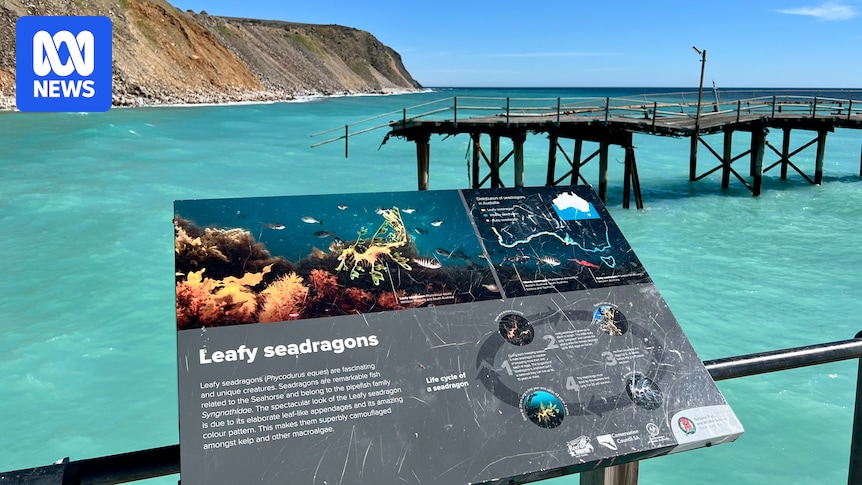
Divers and tourism operators are urging the South Australian government to secure the remnants of the Rapid Bay jetty, located in the state’s south-east, to reopen the world-class dive site beneath it. Since June, a 20-metre exclusion zone for swimmers and boats has been enforced around the remaining sections of the jetty due to storm damage, blocking access to the site.
The original jetty, constructed in the 1940s by BHP for loading limestone, has a storied history. At 488 meters long with a 200-meter T-section at its end, it fell into disrepair in the 1990s and was closed to pedestrians in 2004. Despite this, it remained a vital site for marine life and divers. Community efforts led to the construction of a new Rapid Bay jetty in 2009, while the old structure was left standing.
Impact on Local Businesses
Peter Corrigan, a seasoned diver since 1986 and operator of Sea Dragon Dive Lodge, is among those affected by the closure. He warns that his business, already struggling due to the state’s algal bloom, could collapse if the site remains inaccessible.
“It can be repaired and made safe for divers again,” Corrigan stated. “It’s one of the best dives in the world. That’s no exaggeration.”
Corrigan highlights that many of his international and interstate customers visit specifically to see the leafy seadragons in the area. “It’s on a lot of people’s bucket list to scuba dive, and they get trained up, come down here, and do courses,” he added.
Environmental and Cultural Significance
Catherine Larkin, a marine biologist and operations manager for AusOcean, underscores the site’s importance. “I don’t think people realise how important this site is for divers,” she said. “It’s one of the only sites in the state where you are pretty much guaranteed to see the leafy seadragon.”
A petition by AusOcean, supported by the Scuba Divers Federation of South Australia, has garnered over 1,100 signatures.
Larkin noted that her last dive before the storm damage showed the site was affected by the algal bloom, but marine life was still visible. She emphasized the site’s accessibility from shore and its importance for diver training, particularly under the remaining T-section of the jetty.
Government Response and Future Plans
A spokesperson for the Department for Infrastructure and Transport, responsible for both the old and new Rapid Bay jetties, confirmed that a post-storm assessment revealed further deterioration of the structure. The department plans to explore options to reduce or remove the exclusion zone and engage with divers and stakeholders to determine the best path forward.
“These investigations, including costs and viable options, are expected to be finalised in late 2025,” the spokesperson stated.
The investigation will also include contamination testing on the jetty’s timber and steel components. Meanwhile, renewal work is underway on the adjacent new jetty, which remains open. This includes replacing ladders, repairing damaged steel sections, and installing protective wrapping on some piles to prevent corrosion, with completion expected by mid-September.
The ongoing closure and repair efforts underscore the challenges and opportunities in balancing heritage preservation, environmental protection, and economic viability for local communities reliant on tourism.






